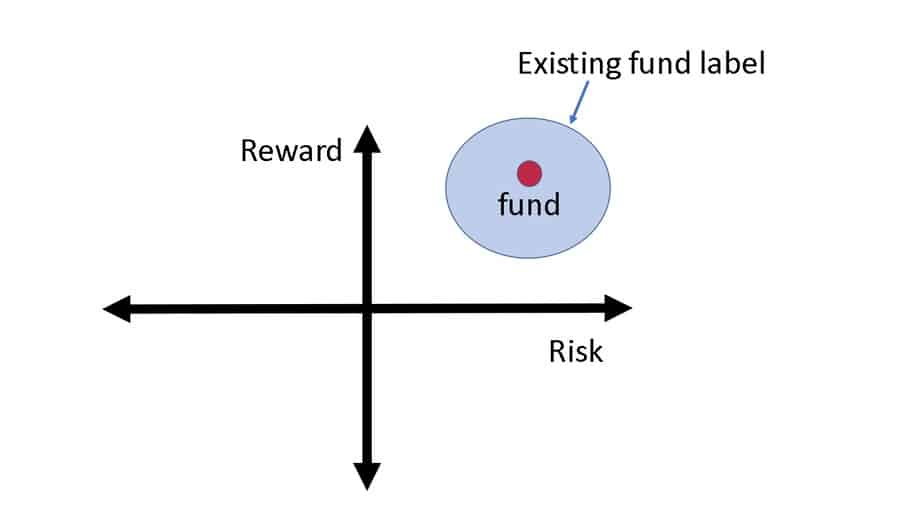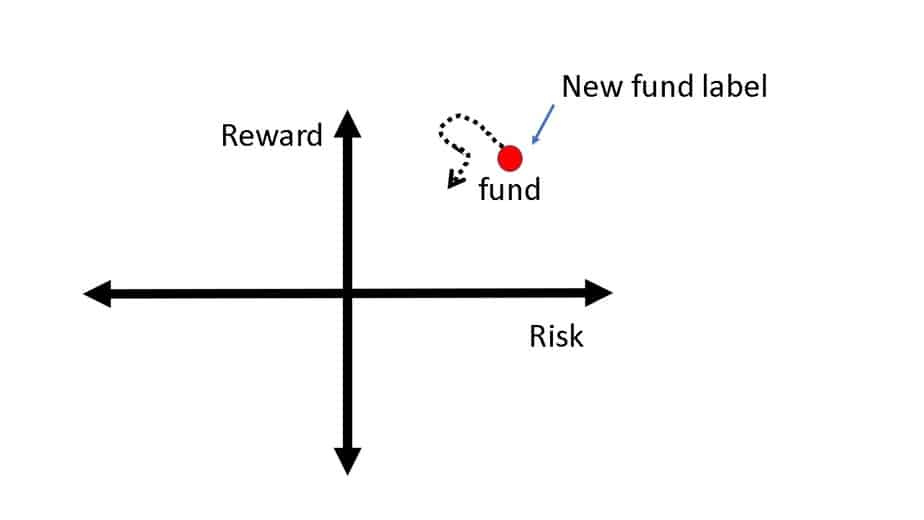Last Updated on December 29, 2021 at 5:46 pm
In a circular dated Oct 5th2020, SEBI once again changed the norms for “Product Labeling in Mutual Fund schemes” – the third such change in the last seven years. In what can only be seen as bizarre, SEBI ruled that a change in the “risk-o-meter” dial for a fund need not be considered as a change in fundamental attribute! There is no limit on the number of such changes permitted!
In March 2013, SEBI adopted a traffic signal like system for labelling MF risk: Blue – principal at low risk; Yellow – principal at medium risk; Brown – principal at high risk. They did not want to use green, amber and red and scare investors away from red!
From three notches on the dial, the risk-o-meter had five notches from April 2015: i: Low – principal at low risk; ii. Moderately Low – principal at moderately low risk; iii. Moderate – principal at moderate risk; iv. Moderately High — principal at moderately high risk; v. High – principal at high risk/
Now five notches have become six! “Moderately Low” now becomes “Low to Moderate Risk” and a new notch “Very High Risk” added. The first troubling aspect of this new circular is the conspicuous absence of the most important phrase “principal at risk
Join 32,000+ readers and get free money management solutions delivered to your inbox! Subscribe to get posts via email! (Link takes you to our email sign-up form)
🔥Want to create a complete financial plan? Learn goal-based investing? Exclusive access to our DIY tools? Increase your income with your skills? Enjoy massive discounts on our robo-advisory tool & courses! 🔥
While the earlier circular bothered to at least inform the investor what was at risk, the new circular does not clarify this! Perhaps that is just as well because regulatory risk appears to be bigger than mutual fund risk.
From arbitrary risk levels on the dial, SEBI has gone all out on “detailed guidelines for evaluation of risk levels of a scheme along with few examples”. Before we fall into that Rabbit hole, consider these allowances given to mutual funds.
- The risk-o-meter reading will be evaluated each month and disclosed
- the number of times the reading changes each year will be disclosed
- “Change in risk-o-meter will not be considered as a Fundamental Attribute
Change”. This means the funds risk and therefore return profile can change at will and the investor will not be given a chance to exit the fund without load.
What is the point in providing elaborate formulae and examples if the fund house is free to vary the risk profile of the scheme? At least the 2015 circular had a vague “Mutual funds may ‘product label’ their schemes on the basis of the best practice
guidelines issued by the Association of Mutual Funds in India (AMFI) in this regard”.
If the risk-o-meter is expected to be so variable then it is useless, to begin with. When we invest in mutual funds, we need to pin the fund in the risk vs return map. It is fine if the fund is placed in a broad space such as this schematic. Movement of the red dot within the blue zone should not be a problem as long as the category classification is properly done – it is not: See: SEBI Multicap MF Rule: Are other fund categories “true to label”

When I read the new rules (what little I can make out of it), it appears as if the “binning zone” has shrunk and even small changes in the fund’s risk profile is being computed and communicated to investors (dotted line).

Surely, this is unnecessary. When I buy a debt mutual fund, I expect it to invest in only one type of bonds predominantly or at least in fixed proportions of different types. For example, a fund can invest bet 40-0% in gilts, 50-70% in AAA bonds, 10-20% in AA bonds and 0-10% in A bonds. All I want is clarity of these levels. I do not need to be informed of a change in risk-o-meter reading when the fund’s asset allocation swings by a huge amount. This is just going to make the retail investor worried. This is the reason, I think, the phrase ‘principal at risk’ is missing from the circular.
The new risk-o-meter is only going to confuse mutual funds investor’s and the only way to avoid confusion is to ignore it altogether. SEBI should have focussed on tightening the norms of fund categorization instead of adding more graduations to the risk dial with elaborate annexures.
For example, most investors have no idea what a Macaulay duration is. Instead of using such an obscure term for classifying interest rate risk, the average portfolio maturity or the average portfolio maturity per risk category would have been a better and easier-to-understand choice.
Already AMCs send enough addendums and circulars on their own. Thanks to SEBI, they will now send more of these and cause investors to worry. Mutual funds are subject to regulatory risks, ignorance risks and market risks in that order. Save yourself by doing your own research and expecting everything to change for the worse.
Join our exclusive Facebook Groups!
- 500+ members are now part of our new course, How to get people to pay for your skills! (watch 1st lecture for free). This was launched Sep 28th 2020.
- 1822 members have signed for Goal-based portfolio management(watch 1st lecture for free). This was launched in Jan 2020.
🔥Enjoy massive discounts on our courses, robo-advisory tool and exclusive investor circle! 🔥& join our community of 7000+ users!
Use our Robo-advisory Tool for a start-to-finish financial plan! ⇐ More than 2,500 investors and advisors use this!
Track your mutual funds and stock investments with this Google Sheet!
We also publish monthly equity mutual funds, debt and hybrid mutual funds, index funds and ETF screeners and momentum, low-volatility stock screeners.





- Do you have a comment about the above article? Reach out to us on Twitter: @freefincal or @pattufreefincal
- Have a question? Subscribe to our newsletter using the form below.
- Hit 'reply' to any email from us! We do not offer personalized investment advice. We can write a detailed article without mentioning your name if you have a generic question.
Join 32,000+ readers and get free money management solutions delivered to your inbox! Subscribe to get posts via email! (Link takes you to our email sign-up form)
About The Author
 Dr M. Pattabiraman(PhD) is the founder, managing editor and primary author of freefincal. He is an associate professor at the Indian Institute of Technology, Madras. He has over ten years of experience publishing news analysis, research and financial product development. Connect with him via Twitter(X), Linkedin, or YouTube. Pattabiraman has co-authored three print books: (1) You can be rich too with goal-based investing (CNBC TV18) for DIY investors. (2) Gamechanger for young earners. (3) Chinchu Gets a Superpower! for kids. He has also written seven other free e-books on various money management topics. He is a patron and co-founder of “Fee-only India,” an organisation promoting unbiased, commission-free investment advice.
Dr M. Pattabiraman(PhD) is the founder, managing editor and primary author of freefincal. He is an associate professor at the Indian Institute of Technology, Madras. He has over ten years of experience publishing news analysis, research and financial product development. Connect with him via Twitter(X), Linkedin, or YouTube. Pattabiraman has co-authored three print books: (1) You can be rich too with goal-based investing (CNBC TV18) for DIY investors. (2) Gamechanger for young earners. (3) Chinchu Gets a Superpower! for kids. He has also written seven other free e-books on various money management topics. He is a patron and co-founder of “Fee-only India,” an organisation promoting unbiased, commission-free investment advice.Our flagship course! Learn to manage your portfolio like a pro to achieve your goals regardless of market conditions! ⇐ More than 3,000 investors and advisors are part of our exclusive community! Get clarity on how to plan for your goals and achieve the necessary corpus no matter the market condition is!! Watch the first lecture for free! One-time payment! No recurring fees! Life-long access to videos! Reduce fear, uncertainty and doubt while investing! Learn how to plan for your goals before and after retirement with confidence.
Our new course! Increase your income by getting people to pay for your skills! ⇐ More than 700 salaried employees, entrepreneurs and financial advisors are part of our exclusive community! Learn how to get people to pay for your skills! Whether you are a professional or small business owner who wants more clients via online visibility or a salaried person wanting a side income or passive income, we will show you how to achieve this by showcasing your skills and building a community that trusts and pays you! (watch 1st lecture for free). One-time payment! No recurring fees! Life-long access to videos!
Our new book for kids: “Chinchu Gets a Superpower!” is now available!


Must-read book even for adults! This is something that every parent should teach their kids right from their young age. The importance of money management and decision making based on their wants and needs. Very nicely written in simple terms. - Arun.Buy the book: Chinchu gets a superpower for your child!
How to profit from content writing: Our new ebook is for those interested in getting side income via content writing. It is available at a 50% discount for Rs. 500 only!
Do you want to check if the market is overvalued or undervalued? Use our market valuation tool (it will work with any index!), or get the Tactical Buy/Sell timing tool!
We publish monthly mutual fund screeners and momentum, low-volatility stock screeners.
About freefincal & its content policy. Freefincal is a News Media Organization dedicated to providing original analysis, reports, reviews and insights on mutual funds, stocks, investing, retirement and personal finance developments. We do so without conflict of interest and bias. Follow us on Google News. Freefincal serves more than three million readers a year (5 million page views) with articles based only on factual information and detailed analysis by its authors. All statements made will be verified with credible and knowledgeable sources before publication. Freefincal does not publish paid articles, promotions, PR, satire or opinions without data. All opinions will be inferences backed by verifiable, reproducible evidence/data. Contact information: To get in touch, use this contact form. (Sponsored posts or paid collaborations will not be entertained.)
Connect with us on social media
- Twitter @freefincal
- Subscribe to our YouTube Videos
- Posts feed via Feedburner.
Our publications
You Can Be Rich Too with Goal-Based Investing
 Published by CNBC TV18, this book is meant to help you ask the right questions and seek the correct answers, and since it comes with nine online calculators, you can also create custom solutions for your lifestyle! Get it now.
Published by CNBC TV18, this book is meant to help you ask the right questions and seek the correct answers, and since it comes with nine online calculators, you can also create custom solutions for your lifestyle! Get it now.Gamechanger: Forget Startups, Join Corporate & Still Live the Rich Life You Want
 This book is meant for young earners to get their basics right from day one! It will also help you travel to exotic places at a low cost! Get it or gift it to a young earner.
This book is meant for young earners to get their basics right from day one! It will also help you travel to exotic places at a low cost! Get it or gift it to a young earner.Your Ultimate Guide to Travel
 This is an in-depth dive into vacation planning, finding cheap flights, budget accommodation, what to do when travelling, and how travelling slowly is better financially and psychologically, with links to the web pages and hand-holding at every step. Get the pdf for Rs 300 (instant download)
This is an in-depth dive into vacation planning, finding cheap flights, budget accommodation, what to do when travelling, and how travelling slowly is better financially and psychologically, with links to the web pages and hand-holding at every step. Get the pdf for Rs 300 (instant download)